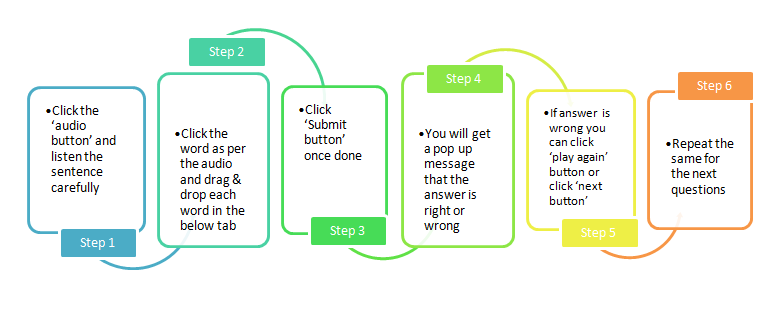

Nouns and verbs
Nouns
Nouns in Sanskrit have three numbers (singular, dual, and plural-एकवचनम्, द्विवचनम्, बहुवचनम्) and one of three genders(masculine, feminine and neuter- पुलिङ्गम्,स्त्रीलिङ्गम्, नपुंसकलिङ्गम्).
They also have eight cases: nominative, vocative, accusative, instrumental, dative, ablative, genitive, and locative- प्रथमा, द्वितीया, तृतीया,चतुर्थी,पञ्चमी,षष्ठी, सप्तमी]
|
एकवचनम् |
द्विवचनम् |
बहुवचनम् |
विभक्तिः |
|
रामः |
रामौ |
रामाः |
प्रथमा |
|
रामम् |
रामौ |
रामान् |
द्वितीया |
|
रामेण |
रामाभ्याम् |
रामैः |
तृतीया |
|
रामाय |
रामाभ्याम् |
रामेभ्यः |
चतुर्थी
|
|
रामात् |
रामाभ्याम् |
रामेभ्यः |
पञ्चमी |
|
रामस्य |
रामयोः |
रामाणाम् |
षष्ठी |
|
रामे |
रामयोः |
रामेषु |
सप्तमी |
|
हे राम |
हे रामौ |
हे रामाः |
सम्बोधनम्
|
Verbs
Verbs are called क्रियापदानि in sanskrit.
To form verbs we need the following:
1. Verbal roots e.g. खाद्, चल्, पठ् etc.
2. विकरणप्रत्ययः
3. Endings of person
Verbal root + विकरणप्रत्ययः = अङ्गम् of root
पठ् + अ = पठ
अङ्गम् of root + ending of person = Verb
Like any other language, there are three tenses in Sanskrit also -
- Present tense -वर्तमानकालः
- Past tense- भूतकाल:
- Future tense -भाविकाल:
वद्- to speak
|
Singular |
Dual |
Plural |
Person |
|
वदामि |
वदावः |
वदामः |
1st |
|
वदसि |
वदथः |
वदथ |
2nd |
|
वदति |
वदतः |
वदन्ति |
3rd |
Some verbs in Sanskrit
|
क्रियापदानि Sanskrit |
Verbs English |
|
वदति |
To speak |
|
गच्छति |
to go |
|
आगच्छति |
to come |
|
पठति |
to read |
|
हसति |
to laugh |
|
पृच्छति |
to ask |
|
खादति |
to eat |
|
चिन्तयति |
to think |
|
पिबति |
to drink |
|
गायति |
to sing |
|
नृत्यति |
to dance |
Examples:
|
The lion roars.
|
सिंहः गर्जतिl |
|
She was a buffalo.
|
सा महिषी आसीत्l |
|
The cow grazes.
|
गौ: चरति।
|
|
That was gold.
|
तत् स्वर्णम् आसीत्।
|
|
This is a man.
|
एष: नर: अस्ति।
|
|
HOW TO PLAY
